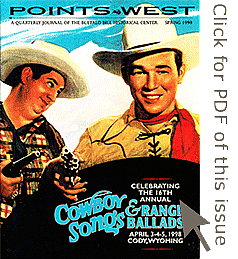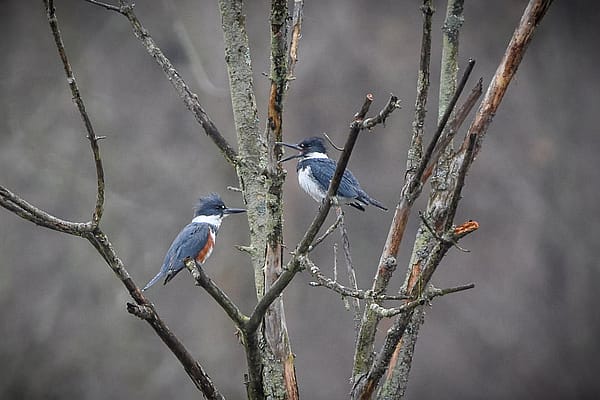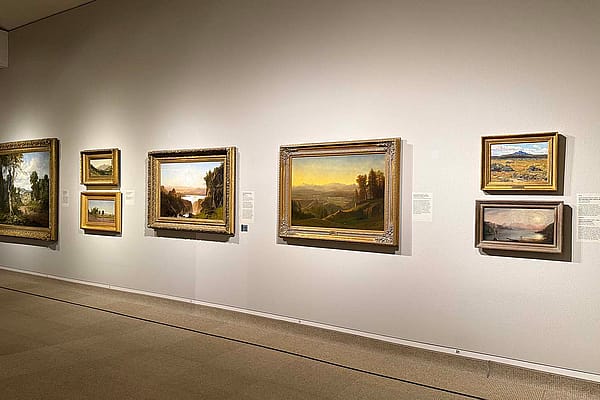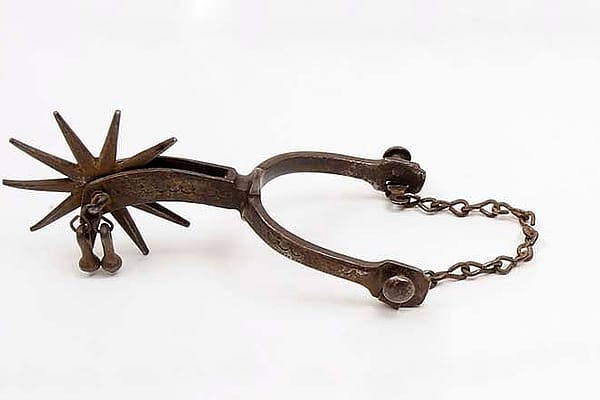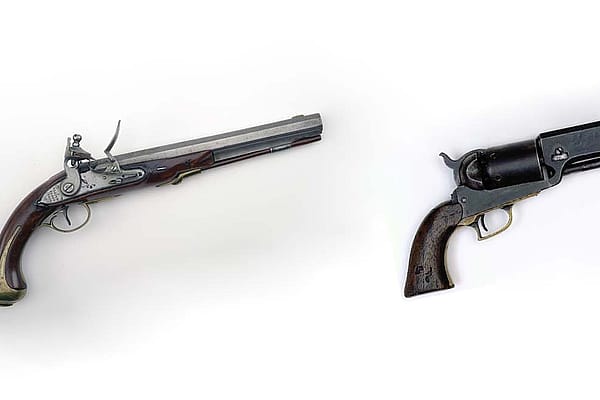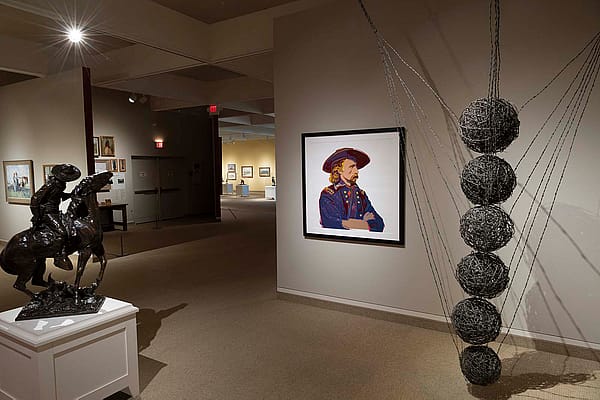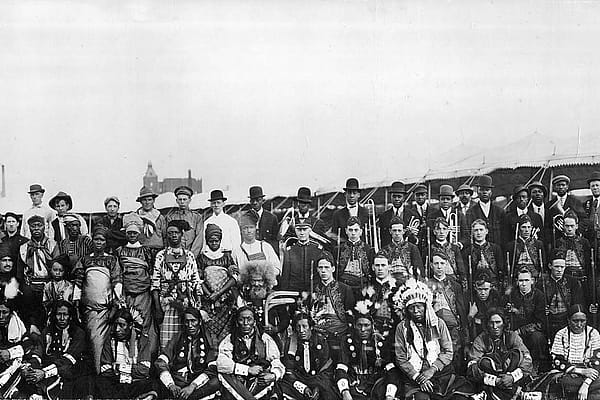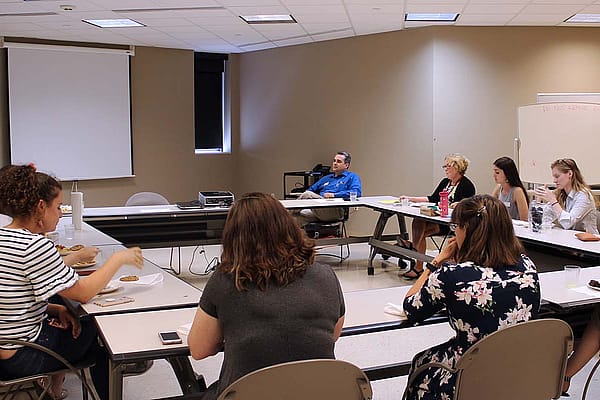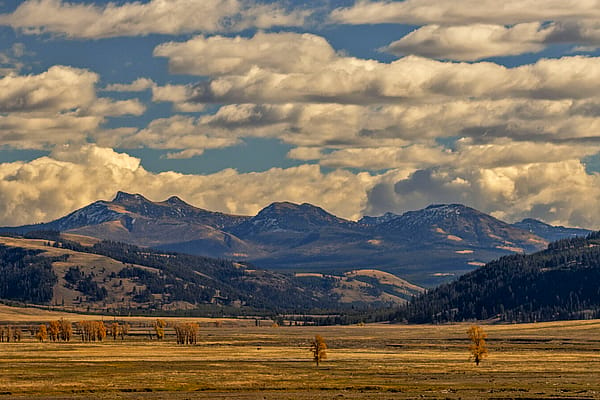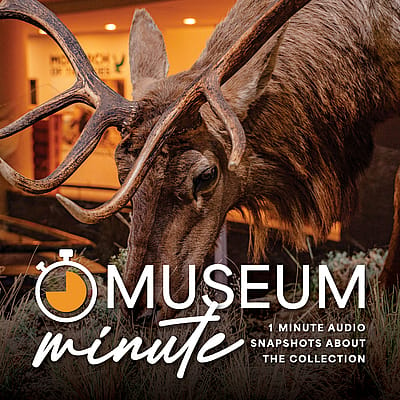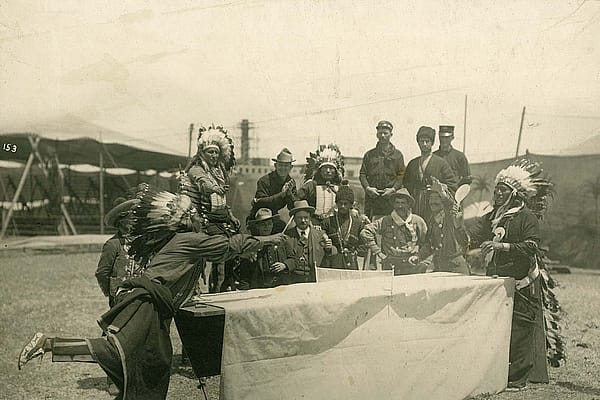
The Singing Cowboys: Real to Reel – Points West Online
Originally published in Points West magazine in Spring 1998
The Singing Cowboys: Real to Reel
By Lillian Turner
Former Director of Public Programs
Cowboys sang songs—popular songs of their day, hymns, and songs that grew out of their own work experiences. As cowboys drifted from one range to another, they picked up and sang songs from all parts of the country. For a time, it seemed that only cowboys were interested in their songs.
By the turn of the century, Wild West shows, western novels, and stage productions had helped to popularize the cowboy. Tin Pan Alley determined to capitalize on this phenomenon with its versions of cowboy music. In 1905 songwriters Egbert Van Alstyne and Harry Hiram Williams, following the success of their “In the Shade of the Old Apple Tree,” combined their talents to produce “Cheyenne,” hoping to have a cowboy love song moneymaker. When the cylinder recording by Billy Murray was released in 1906, “Cheyenne” became the first “cowboy song” to be a national hit.
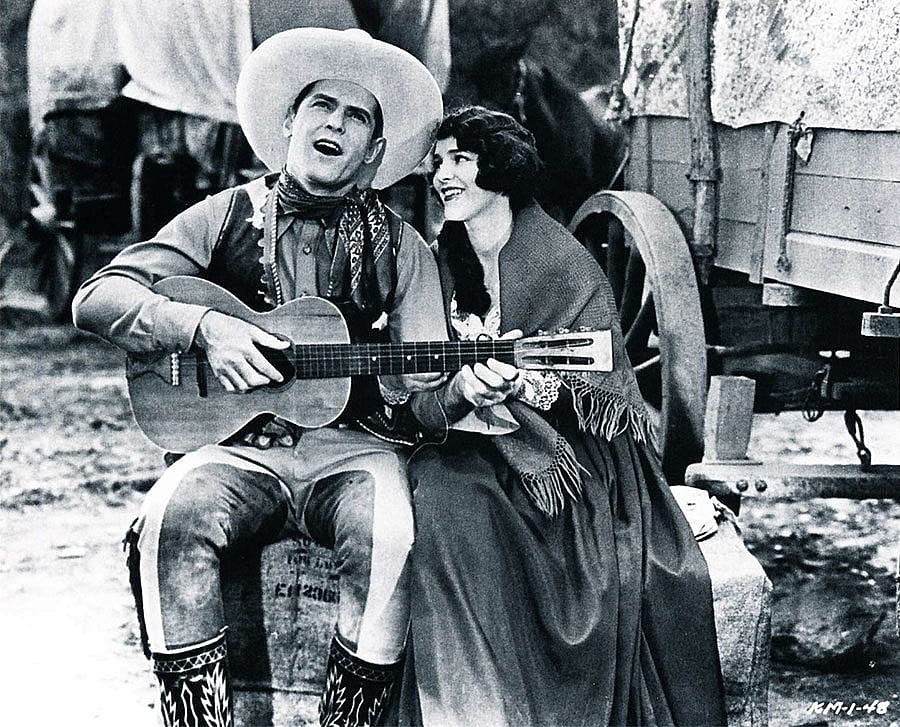
Although N. Howard “Jack” Thorp (1908) and John A. Lomax (1910) had both published collections of traditional cowboy songs, what most Americans were familiar with were the songs they purchased as sheet music or heard on vaudeville stages, in music halls, or on recordings. It was not until 1925 that a “real” cowboy recorded a “real” cowboy song. Carl T. Sprague’s recording of Montana poet D.J. O’Malley’s “When the Work’s All Done This Fall” sold 900,000 copies. He was followed soon by Jules Verne Allen, Harry “Haywire Mac” McClintock, Charles Nabell, and Ken Maynard.
By the 1920s the new medium of radio also provided Americans with more music and the opportunity for many of them to perform as well. Singers with a modest degree of talent could often secure a 15-minute slot once a week on a local radio station in need of programming.
America’s first “singing cowboy” to broadcast nationally began his singing career on WEAF, an NBC station in New York City, in 1926. John I. White was a Washington, D.C. native who fell in love with cowboy songs when visiting cousins in Arizona. Choosing to sing those songs, he was called “The Lonesome Cowboy” after moving to station WOR. In 1930 he was hired as a singer to appear on NBC’s new weekly coast-to-coast radio drama called “Death Valley Days” sponsored by Pacific Coast Borax Company. His published folio of cowboy songs could be obtained by sending in a boxtop from one of his sponsor’s products.
Silent western movies had been entertaining the American public for more than 25 years. In early 1929 sound came to westerns with the release of In Old Arizona. Shortly after, the “singing cowboy” was born.
Horseman, trick rider, and silent film star Ken Maynard that year added to his silver screen credits his talents as musician and singer in the 1929 release, The Wagon Master. For his first “singing cowboy” role, Maynard chose to sing traditional cowboy songs, “The Lone Star Trail” and “The Cowboy’s Lament.”
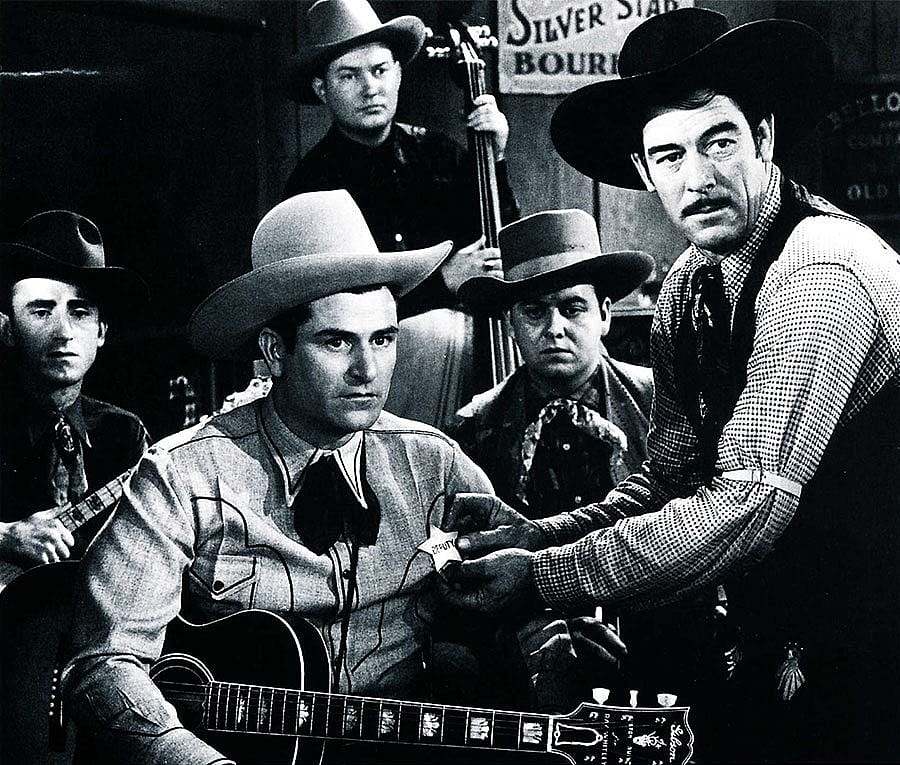
Perhaps Ken Maynard’s greatest contribution to the “singing cowboy” movies was his introduction of radio and recording artist Gene Autry to the silver screen in Maynard’s In Old Santa Fe (1934).
Gene Autry began performing on radio station KVOO in Tulsa, Oklahoma, and was cutting records for several labels when he was hired by Sears Roebuck in 1931 to appear on their Chicago station WLS. Autry was given his own program as “Oklahoma’s Singing Cowboy” and began appearing on the “National Barn Dance.” His 1931 recording of “That Silver Haired Daddy of Mine” was the first million-selling record.
Sears, Roebuck and Co. helped build Autry’s popularity through the catalog sale of his song folios, records, and a $9.98 Gene Autry Roundup guitar.
When Gene Autry received a call from Hollywood, he took with him his accordionist and friend Smiley Burnette. After his debut in Ken Maynard films, Autry, along with “sidekick” Burnette, starred in a 1935 serial called Phantom Empire before being given the lead in Tumbling Tumbleweeds.
The singing cowboy rage had begun.
Gene Autry’s almost overnight success as a singing cowboy star had studios scrambling to find and develop their own singing cowboys: Dick Foran, Fred Scott, Bob Allen, Ray Whitley, Smith Ballew, Bob Baker, Jack Randall, George Houston, Gene Austin, Donald Grayson.
Although many of these singing cowboy hopefuls made several movies, none of them achieved the desired success. Several became second leads providing the musical moments in movies with non-singing western stars.
Two important contributions to the singing cowboy genre were made by Herb Jeffries and Dorothy Page. Herb Jeffries, a jazz vocalist traveling with the Earl “Fatha” Hines Orchestra, determined that black youth needed a cowboy hero as well. He approached independent producer Jed Buell and was given the go-ahead to line up cast and star for a series of all-black singing cowboy movies. No singing-riding actor could be found, so Jeffries himself starred in a five film series (1936-1939) which included Harlem Rides the Range and The Bronze Buckaroo.
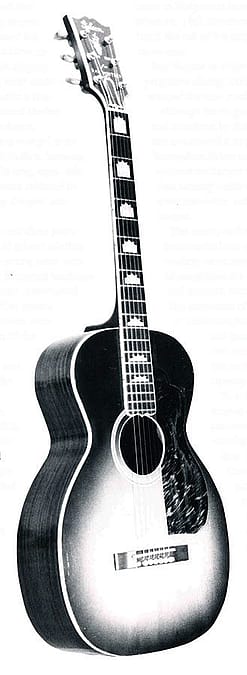
Dorothy Page was the only singing cowgirl to be given a starring role. Grand National Studios, however, gave the talented actress who could sing, rope, ride, and shoot only three films which were released in 1939: Ride ’em Cowgirl, The Singing Cowgirl, and Water Rustlers.
In 1937, when Republic Studios and Gene Autry began to feud, the studio decided to groom another singing cowboy star. They chose a young actor who had been appearing in small roles in several westerns under the stage name of Dick Weston. His musical talent had already been showcased in several Gene Autry and Charles Starrett movies with the trio he helped found – the Sons of the Pioneers. Republic Studios gave Leonard Stye his first starring role and a new name—Roy Rogers—in Under Western Stars (1938).
Although Autry continued as the reigning singing cowboy of the 1930s, Roy Rogers became the “King of the Cowboys” in the 1940s. He would continue making an average of eight movies a year until Pals of the Golden West in 1951.
Singing cowboys Tex Ritter, Jimmy Wakely, Eddie Dean, Monte Hale, and Ken Curbs joined Gene Autry and Roy Rogers in the last decade of musical westerns. The last of the silver screen cowboys began his movie career in The Arizona Cowboy (1950). Native Arizonan Rex Allen, like many of his predecessors, came to Hollywood from a radio/ recording career. When his 19th film Phantom Stallion was released in 1954, the era of the singing cowboy westerns had come to an end.
Roy Rogers and Gene Autry, who had radio programs during much of their movie careers, now entered the new medium of television.
Although the singing cowboys vanished from movies and television by the late 1950s, they returned with the creation of a singing group in 1977. Calling themselves Riders in the Sky, singers, musicians and songwriters Ranger Doug, Too Slim, and Woody Paul recently celebrated the 20th anniversary of their television, radio, recording, and performance career.
The music of the cowboy and his silver screen counterpart lives on at the growing number of cowboy music gatherings, through radio stations allotting time for western music, and the tape and cassette sales of numerous new entertainers. The formation of the Western Music Association in 1986 brought together individual performers and groups dedicated to the preservation and performance of the music of both the traditional cowboy and the singing cowboys of the silver screen.
Post 117
Written By
Nancy McClure
Nancy now does Grants & Foundations Relations for the Center of the West's Development Department, but was formerly the Content Producer for the Center's Public Relations Department, where her work included writing and updating website content, publicizing events, copy editing, working with images, and producing the e-newsletter Western Wire. Her current job is seeking and applying for funding from government grants and private foundations. In her spare time, Nancy enjoys photography, reading, flower gardening, and playing the flute.
